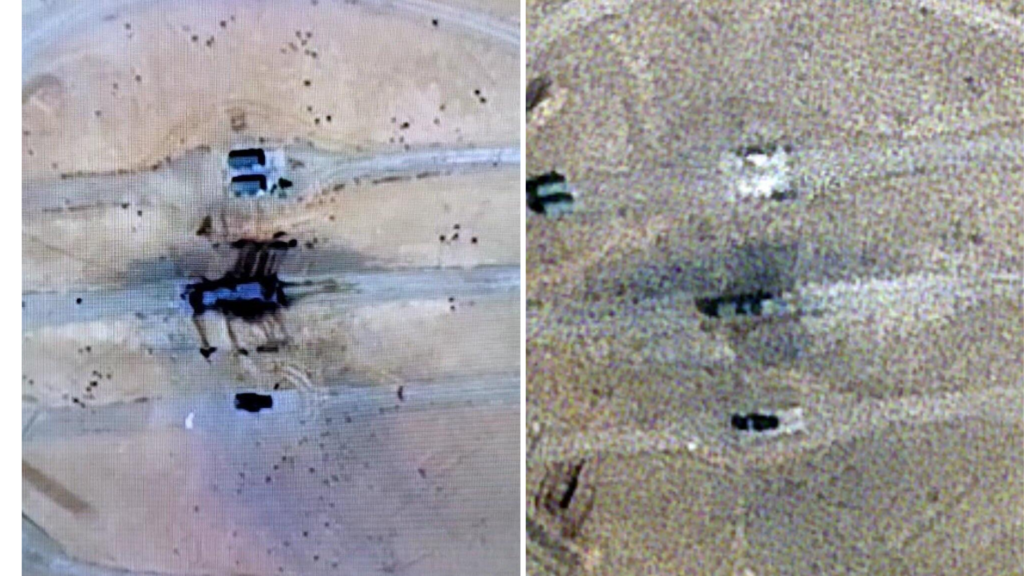Getting your Trinity Audio player ready...
The Economist, a British weekly, reported that Iran replaced a destroyed radar installation within hours of an alleged Israeli strike on an air base last week in an attempt to downplay the extent of the damage caused and to portray it as minimal.
Satellite imagery of an air base adjacent to the Natanz nuclear complex near Tehran reveals significant damage to a Russian-made radar system believed to be used by Iran. Suspected Israeli ballistic missiles, launched from the air, are thought to have inflicted the damage.
1 View gallery


The damage after the attack (left). The new equipment placed a few hours after (right)
(Photo: The Economist)
The strike is believed to have been orchestrated to demonstrate Israel's capability to effectively neutralize Iran's missile defense systems from a considerable distance, serving as a potent warning.
In addition, according to the report, Iran has raised its air defense systems linked to radar as if they were ready to fire, despite their apparent ineffectiveness following the attack. Shortly after the strike, Iran claimed it was attacked by small Israeli drones, but they were reportedly intercepted and no damage was caused.
Before and after the attack on the Iranian base in Isfahan
Chris Biggers, a former U.S. intelligence official at the National Geospatial-Intelligence Agency, said that Iran had deliberately covered up the impact of the alleged Israeli strike to suggest it had been unsuccessful.
“It’s a case of denial and deception to suggest the site is still operational,” he told The Economist.
He told The Telegraph that Iran also had moved its missile batteries away from the site in the immediate aftermath of the attack, in anticipation of a second Israeli strike.




